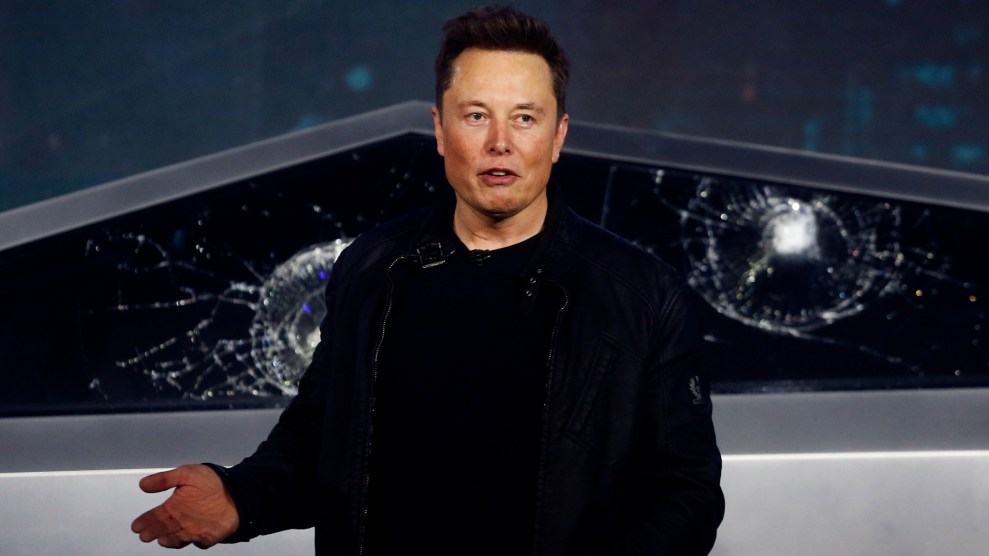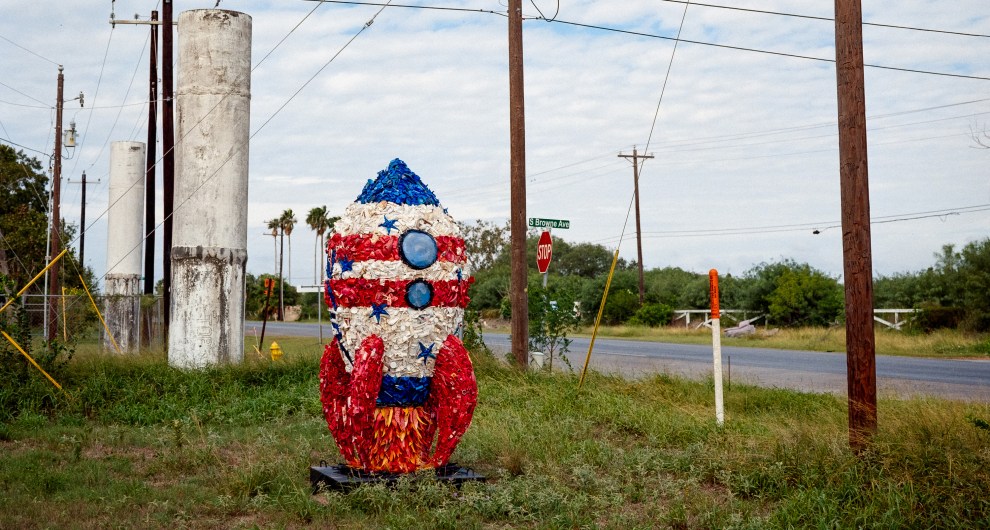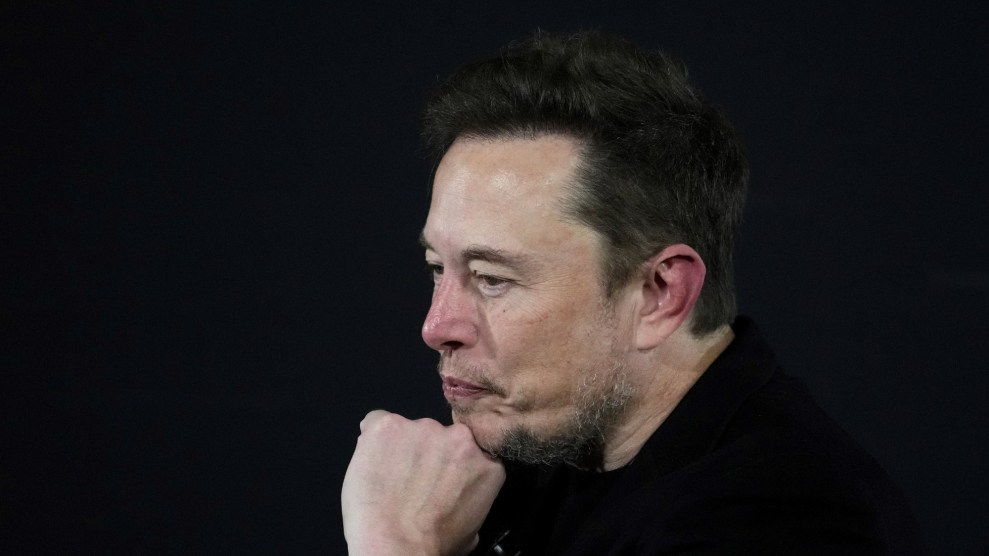
Tesla CEO Elon Musk stands in front of the damaged Cybertruck after it fails a demonstration of its durability.Ringo H.W. Chiu / AP
At a live delivery event this November, where Elon Musk awkwardly opened the door for about a dozen new Cybertruck owners, he told the world: “The apocalypse can come along any moment, and here at Tesla, we have the best in apocalypse technology.”
Then he showed a video of the vehicle being pummeled by a machine gun, quipping, “If you’re ever in an argument with another car, you will win.”
And then he sold a bunch of Cybertrucks. Two million have been preordered—and 500 delivered—for over $60,000 a pop. Some soon proved that they couldn’t survive a test drive, let alone a ride with Mad Max. I’m not kidding. Not one, but two Cybertrucks have been reported broken after test drives since October. Advertised as able to drive on “any planet,” the truck has been mocked for failing to drive up a snowy hill in California.
The vehicle, which was supposed to arrive in 2021 with a $40,000 price tag, was first announced in November 2019 in Los Angeles—the exact time and place where the film Blade Runner was set. The date is likely no accident: Musk has said that a character in the movie would have driven his truck. (It’s unclear if Musk has seen the movie; he named a character that didn’t exist.)
Regardless of Musk’s pop culture knowledge, I can guarantee no character in the BCU (Blade Runner Cinematic Universe) would own one of these trucks. The ’80s sci-fi classic is known for its abundance of rain. (The rain makes no sense meteorologically, but hey! That’s Hollywood.) And Cybertrucks are now known for rusting in the rain. A lot.
In Tesla’s promotional video advertising the bulletproof nature of their beastly vehicle, an engineer boasted that the custom alloy they used for the truck was a “bit more corrosion-resistant.” The engineer doesn’t say what it was more corrosion-resistant than. Apparently, not much.
This week, on Cybertruckownersclub.com, which is exactly what it sounds like, hysterics broke out as owners realized they may be destined to a life of high-maintenance car buffing due to frequent rust. Several threads blew up as owners raced to figure out how their stainless steel vehicles could, you know, have stains. One commenter wrote: “Just picked up my Cybertruck today. The advisor specifically mentioned the cybertrucks develop orange rust marks in the rain and that required the vehicle to be buffed out.” Others posted photos of their trucks already speckled by damage.
Snuck in the owner’s manual, it turns out, was a whole section about how the stainless steel was quite stainable. The manual details: “To prevent damage to the exterior, immediately remove corrosive substances (such as grease, oil, bird droppings, tree resin, dead insects, tar spots, road salt, industrial fallout, etc.)”
I don’t know about you all, but I always leave time in my apocalypse adventures to stop the car immediately after a bird shits on it. Maybe Musk falls into the “birds will go first” category of apocalypse believers?
To be clear, avoiding rust and corrosion isn’t just an aesthetic preference. Car experts write that “Rust can eat away at the internal components of your car and compromise its stability and weaken your car’s structural components and limits its capacity to handle impacts, consequently endangering your life.”
Genuine question, Elon, can you count it as “best in apocalypse technology” if it can’t even survive a little rain storm?
This isn’t the first time a futuristc car has had trouble in the rain. The DeLorean, the famous stainless steel sci-fi car of the 80s, is notorious for it.
It’s ironic, to say the least, that futuristic cars aren’t rain-ready, since all climate models forecast a future with more extreme weather. In the 80s, when DeLorean was made, those models were a little more iffy. But Elon doesn’t have that excuse. Why chose a metal that doesn’t stand up to predictably erratic environmental conditions?
Dr. Matthew Watkins, principal lecturer in mechanical engineering at Nottingham Trent University, had a similar question.
In an article for The Conversation, Watkins explains that pretty much every design choice—from the truck’s bulky frame to its safety concerns—stems from the decision to make it from stainless steel. “Why choose a material that is more difficult to form using traditional processes and that compromises your design language and aerodynamic efficiency?” he asked.
The answer was simple. The real reason why the metal, which made it bulky, rusty, ugly, and unsafe, was necessary? Because it apparently had to be bulletproof. “The key function that has determined the design of the Cybertruck is the requirement to be bullet-proof,” Watkins said, and “this material has enabled Tesla to make a truck that is.” (Far from the first shot at turning a profit on Silicon Valley’s doomsday complex.)
The bulletproof quality of the vehicle has been a pillar since it was first announced and spectacularly failed a live demonstration of that capability. And we know Musk hates being embarrassed, so it’s no surprise great care would be put into defending his ego at the expense of everything else.
And maybe that’s what makes Tesla, and the rest of the Musk empire, so apocalyptic. As Watkins writes, “a bulletproof, go-anywhere, do-anything tank with the ability to reach 60mph in 2.6 seconds is quite a tool in the wrong hands.” Cybertruck—and while we’re at it, X, and SpaceX, and self-driving Teslas—may be the best apocalypse technology. It’ll just be the cause of it.
















